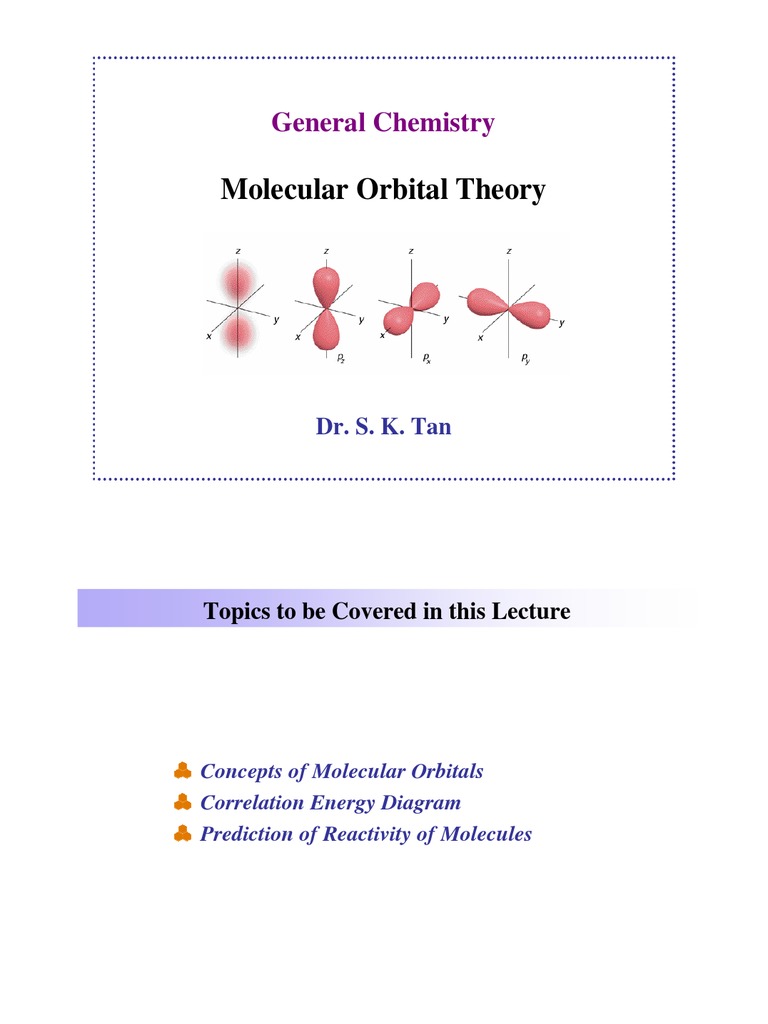Molecular Orbital Theory (MOT) stands as a cornerstone of modern chemistry, providing profound insights into the nature of chemical bonding beyond classical interpretations. This theoretical framework re-evaluates the interactions between atomic orbitals to produce molecular orbitals, which reveal how atoms collaborate to form molecules. In this exploration, one will dissect the varieties of chemical bonds as illuminated by MOT, thereby unveiling a rich tapestry of atomic interrelations.
At the heart of MOT lies the concept of molecular orbitals, which arise from the linear combination of atomic orbitals (LCAO). When atoms of different elements approach each other, their atomic orbitals overlap, producing new orbital formations. These molecular orbitals can be categorized mainly into bonding and antibonding orbitals, each serving distinct roles in the stability and properties of the resultant molecules.
The fundamental unit of bonding within molecules emerges from bonding molecular orbitals. These originate from the constructive interference of atomic orbitals. When two atomic orbitals combine constructively, they produce a lower-energy orbital characterized by a greater electron density between the nuclei. This enhanced electron density not only stabilizes the molecule but also mitigates the repulsive forces exerted by positively charged nuclei. The resultant bonding molecular orbitals can accommodate two electrons, imparting a strong attractive force that enhances molecular stability.
In contrast, we confront antibonding molecular orbitals, which result from destructive interference between atomic orbitals. When two orbitals combine out of phase, an antibonding orbital is formed, possessing a nodal plane between the nuclei where no electron density exists. These orbitals contribute positively to the energies of the constituent atoms, introducing instability within the molecular structure. Hence, while the electrons occupying bonding orbitals fortify the molecular bond, those in antibonding orbitals counteract this stability, rendering the existence of an antibonding orbital a determinant in the molecule’s overall strength and characteristics.
Understanding the energy diagrams associated with bonding and antibonding orbitals illustrates another fascinating aspect of MOT. Each molecular orbital in a molecule may be depicted in an energy level diagram. The lowest energy orbitals are filled first in accordance with the Pauli Exclusion Principle and Hund’s Rule, which dictate electron arrangements and behaviors. By analyzing the configuration of electrons within these orbitals, chemists can predict the magnetic and electronic properties of molecules. For example, the presence of unpaired electrons in antibonding orbitals leads to paramagnetism, a property of notable interest in material sciences.
A quintessential example of molecular orbital theory in action is in diatomic molecules, such as nitrogen (N2). In N2, the molecular orbitals are filled in such a way that all lower-energy bonding orbitals are occupied while antibonding orbitals remain vacant. The bond order, defined as half the difference between the number of bonding and antibonding electrons, yields a bond order of three, signifying a triple bond that renders N2 particularly stable. Such stability plays an integral role in the context of atmospheric chemistry and the behavior of nitrogen under various conditions.
The concept of bond order itself serves as a quantitative descriptor of bond strength and stability. It allows researchers to distinguish between single, double, and triple bonds, extending beyond the simplistic representations found in Lewis structures. As demonstrated by MOT, a higher bond order correlates with decreased bond lengths and increased bond strengths. For example, the bond order of oxygen (O2) is two, typifying a double bond, while the molecular orbital configuration reveals the intriguing phenomenon of its paramagnetism, which diverges from classical expectations.
Delving deeper into the realm of molecular orbital theory, one encounters the concept of delocalization. Unlike classical descriptions that treat electrons as localized between two atoms, MOT introduces the notion that electrons can be spread over multiple nuclei. This behavior is particularly observable in conjugated systems, such as benzene, where six carbon atoms create a delocalized π-electron cloud above and below the plane of the molecule. Such delocalization not only provides stability but also contributes to unique spectroscopic properties, enhancing the applicability of aromatic compounds in various chemical contexts.
Furthermore, MOT facilitates an understanding of hyperconjugation and its implications for molecular stability and reactivity. Hyperconjugation refers to the interaction between the electrons in filled orbitals and adjacent empty or partially filled molecular orbitals. This phenomenon is responsible for various structural stabilities in organic molecules, particularly those involving alkyl groups and their influence on conformational isomers.
In conclusion, Molecular Orbital Theory offers a multifaceted perspective on chemical bonding, enriching our understanding of molecular interactions. By framing chemical bonds within a discussion of bonding and antibonding orbitals, energy levels, bond orders, and delocalization, MOT transcends traditional boundaries, facilitating not only a deeper appreciation but also extensive applications across various realms of chemistry. This rich theoretical landscape prompts further inquiry into the underlying principles governing molecular behavior and opens the door to innovative real-world implications in materials science, pharmacology, and nanotechnology.












